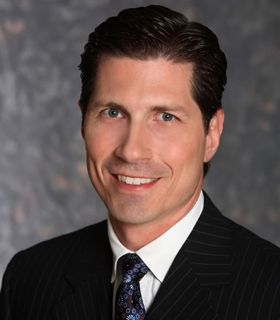Revision rhinoplasty is exactly what it sounds like: a follow-up surgery to alter the original operation. If you are needing revision rhinoplasty, it could be for many reasons. In some cases, something may have gone wrong with the original procedure, and a medical fix is necessary. Maybe your original rhinoplasty may have resulted in a deviated septum, frequent nosebleeds, or breathing difficulties, or just doesn’t look like you wanted it to.
Finding the right plastic surgeon is of utmost importance, because this one has to count. Beyond the clinical knowledge, skill, and experience necessary to carry off this procedure, you will want a board-certified plastic surgeon who will take the time to listen to what you need to happen and input and what did or didn’t work in the original surgery.
Everyone will have several reasons why they would want to revise their rhinoplasty, but the one thing they absolutely need is a plastic surgeon with the right mix of technical command, expertise, experience and compassionate care to do the work.
[youtube]https://www.youtube.com/watch?v=LDBOOghOkJs[/youtube]Why Patients Seek Revision Rhinoplasty
Besides a patient not being satisfied with the previous rhinoplasty results, this hardly describes the emotional stress the patient has experienced in the interim between procedures. Each patient’s motivation is different, but whatever the motivation, everyone who looks into revision rhinoplasty needs an attentive, detail-oriented, caring specialist of a plastic surgeon for this secondary surgery.
What to Look for in a Plastic Surgeon for Your Revision Rhinopasty
The demand for revision rhinoplasty may stem from the fact that cosmetic surgeons abound these days, but unfortunately, the skill levels can vary wildly. It’s not necessarily a matter of a medical training; most doctors share a common educational foundation, and they’ve done the required residency and training.
Look for board-certified plastic surgeons who specialize in revision rhinoplasty and devote much time to perfecting cutting-edge techniques to perform the best revision rhinoplasty surgury and get the best, long-lasting results. Surgeons such as Rox Center’s Dr. Jay Calvert in Beverly Hills have perfected highly advance techniques such as Secondary Rhinoplasty with Rib Graft and Secondary Rib Graft Revision.
Although many surgeons have their own private surgical facilities, check to see if they have hospital privileges. This tells a lot about a plastic surgeon, when they are part of the larger medical community and have hospital privileges.
Instead, it comes down to intangibles such as aesthetics and patient care. Obviously, anyone going in for revision rhinoplasty has sat down with a surgeon before — but it wasn’t enough. For these repeat clients, a revision rhinoplasty specialist must then distinguish him- or herself with extra attention and a keen ear for the patient’s needs and goals.
For patients, the question then becomes how to find the right plastic surgeon for revision rhinoplasty.
A good place to start:

Jay Calvert M.D., FACS, Board Certified Plastic Surgeon, Beverly Hills: 310.770.8800, Newport Beach: 949.644.2858 www.JayCalvertMD.com
Recommendations or referrals from your regular doctor, who likely has the connections and judgment necessary to link you with a strong candidate
Beyond the doctor’s office, you might want to check with trusted family, friends, or colleagues. Granted, it’s not always easy to talk openly about plastic surgery, though those barriers are falling as more patients come through the doors. Still, if you’re secure in your relationship with someone else who’s visited a plastic surgeon, by all means get their opinion — it’s a valuable asset.
You’ll certainly want a doctor with the right credentials and experience, but the ultimate dealmaker will be your face-to-face consultation with the plastic surgeon.
Remember to state your case clearly, especially your goals for the revision rhinoplasty, and don’t be afraid to ask questions. Also, be frank about what may have gone wrong with the earlier procedure. The doctor may be able to offer new perspective and, under the best circumstances, remedial techniques to counteract the initial surgery.
On a more positive note, you may want to bring photos and open up a discussion on what may work best for your face and bone structure. At the same time, be realistic about what the revision rhinoplasty can achieve. A good surgeon will be able to inform you of what the scalpel can and can’t achieve, then balance it with your vision. Trust your guts; it’s a good sign if you leave the appointment with a clear sense of the surgeon’s competence and compassion.
Revision Rhinoplasty Techniques
On paper, revision rhinoplasty sounds like a relatively simple update to an earlier surgery. In fact, it’s much more complicated, as the surgeon must often correct his or her predecessor’s mistakes. Only then can the doctor move on to the next task of fulfilling the patient’s request for the nasal structure they want.
Overall, revision rhinoplasty presents a much bigger challenge than the earlier procedure. The doctor must operate on and reconstruct fine, delicate bone structures that may have been damaged in the preceding surgery. To replace or supplement the problematic areas, the surgeon will likely use graft material, in the form of cartilage, taken from the patient’s own body. The source of the cartilage can vary, but it will come from an area that’s not noticeable. For example, rib cartilage is often used in revision rhinoplasty and is considered a sound and plentiful material for, say, rebuilding nose bridges.
Prospective patients should be aware that revision rhinoplasty procedures take much more time than initial treatments, due to considerations for scar tissue and the overall complexity of the operation. Patients can expect to undergo 4 to 5 hours of surgery, but times will vary depending on the particulars of the operation. Of course, the more fixes that are needed, the more time it will take.
After the surgery
These highly involved operations, in turn, require longer recovery periods. Everyone’s time will vary, so check with the surgeon to firm up your timeline. Otherwise, you can expect to adhere to the usual commonsense advice: Avoid strenuous activity (including exercise), stay out of harsh sunlight, and don’t bump or jar the nose for at least a couple of weeks. Ice is recommended to reduce swelling, though puffiness may persist for a while longer. Your doctor may also prescribe painkillers to relieve the aches and aggravation. You’ll likely need a week away from work, school, or your usual activities, and at the end of that stretch, you can expect to get your stitches and splints removed.
This follow-up appointment is a good time to firm up the rest of your recovery schedule, including potential bumps in the road. Then again, if you’ve chosen the right plastic surgeon, asked the right questions, and engaged in a meaningful exchange, the complications should be minimal or even nonexistent.
You don’t have to live with an unsatisfactory nasal surgery; the technology and know-how is there to reconstruct your nose for a more pleasing appearance. And though revision rhinoplasty can never be considered a simple procedure, putting in the time to find the right plastic surgeon, one who combines the right resume with an attentive ear, will go a long way toward ensuring a smooth process.
The doctor may yield the scalpel, but you want to be involved in the overall procedure. If you put in your time early in the cycle to talk to the surgeon and convey your goals, you’ll be sure to come away a satisfied client in the end.
RoxCenter.com







